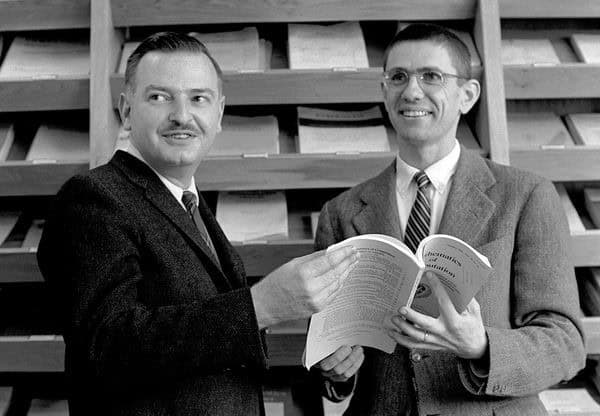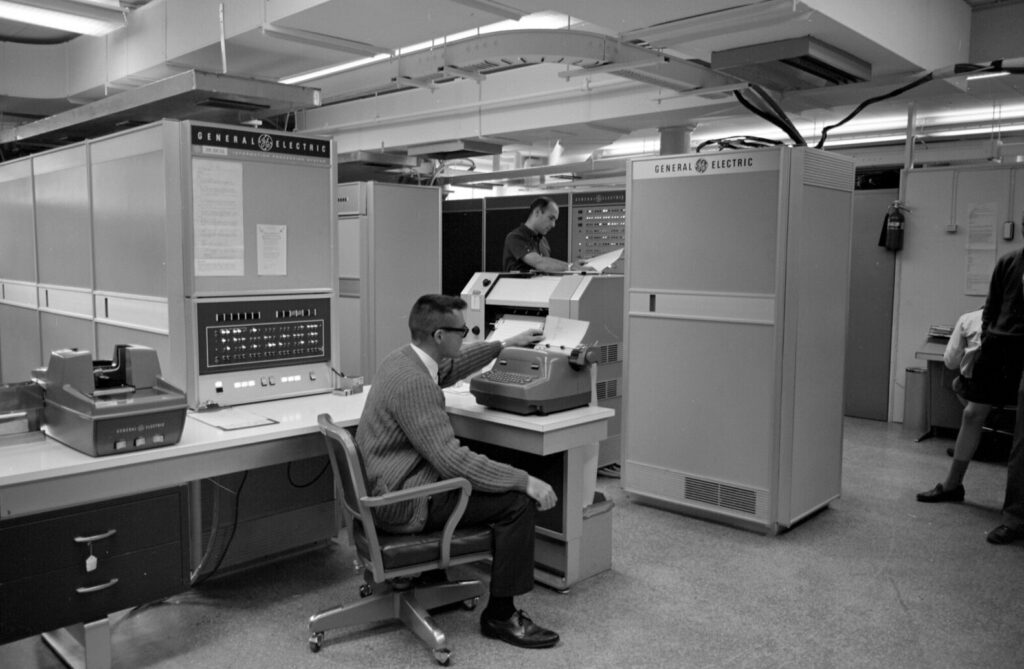
With deep sadness, we say goodbye to computer pioneer Thomas Kurtz.
Thomas Eugene Kurtz (Feb. 22 1928–Nov. 12, 2024) was an American mathematician, computer scientist and co-inventor, with John Kemeny, of the BASIC programming language and Dartmouth Timesharing System.
In the early days of academic computing in the 1960s, there were no simple non-professional programming languages available for undergraduates. BASIC was aimed at this audience. To realize their vision, Kurtz and Kemeny concurrently developed the Dartmouth Timesharing System, allowing BASIC to be accessed by students around campus using Teletype terminals.
Born in Oak Park Illinois, Kurtz graduated from Knox College in 1950, and received his PhD in mathematics from Princeton University in 1956. In 1951, Kurtz was fortunate in obtaining rare experience on a computer—the pioneering SWAC machine created by the National Bureau of Standards and housed at UCLA. SWAC, the Standards Western Automatic Computer, was among the earliest electronic computers in the United States and was supervised by legendary computer pioneer and 2013 CHM Fellow Harry Huskey.
Kurtz began teaching at Dartmouth upon receiving his PhD. After a few years, he and fellow professor John Kemeny developed the original version of the Dartmouth Timesharing System (DTSS), a method of sharing computer access across a network and a requirement for allowing multiple students access to BASIC.

John Kemeny (left) and Thomas Kurtz (right), ca. 1964. Courtesy of the Darmouth College Library
DTSS was the earliest successful, large-scale timesharing system, a remarkable achievement. General Electric, which had donated computers to Dartmouth, extended DTSS into the kernel of their online services, such as Genie. DTSS was unveiled on May 1, 1964, along with BASIC. By that fall, hundreds of students were exploring BASIC on the 20 terminals around campus.

General Electric GE-225 mainframe computer, home to the Dartmouth Timesharing System, ca. 1967. Courtesy of the Dartmouth College Library
Since its inception, the BASIC language has flourished across multiple generations of computers—from mainframes and minicomputers in the 1960s, to microcomputers in the 1970s and ‘80s to the credit-card sized Raspberry Pi computer of today. In 1978, Harvard students Bill Gates and Paul Allen wrote their first version of BASIC for a new hobbyist-oriented microcomputer, the MITS Altair 8800. Their version of BASIC turned the Altair from a blinking box with few capabilities into a useful computer, and BASIC’s popularity skyrocketed again during the personal computer era.
From 1966 to 1975, Kurtz served as the director of the Kiewit Computation Center at Dartmouth and as director of the Office of Academic Computing from 1975 to 1978. In 1979, he and Stephen J. Garland organized a professional master's program in Computer and Information Systems, funded in part with a grant from IBM.
In 1983, Kurtz joined Kemeny and three former Dartmouth students in forming True BASIC, Inc., whose purpose was to develop quality educational software and a platform-independent BASIC compiler. Upon termination of the CIS program in 1988, Kurtz returned to teaching and retired from Dartmouth in 1993.
Kurtz served as council chairman and trustee of EDUCOM and on the so-called Pierce Panel of the President's Advisory Committee. He also served on the steering committee for two NSF- and ARPA-supported activities and was the chair of the first CCUC conference on instructional computing. He helped form American National Standards committee X3J2, which developed the ANSI standard for BASIC, serving as chair from 1974 to 1985. Kurtz was a member of the ISO committee SC22/WG8, concerned with the international standard for BASIC, and served as its convener from 1987 to 1993. In 1994, he was inducted as a Fellow of the ACM.
The development of the Dartmouth time-sharing system video.
Thomas Kurtz's granddaughters shares his thoughts on developing the time-sharing system in this video.